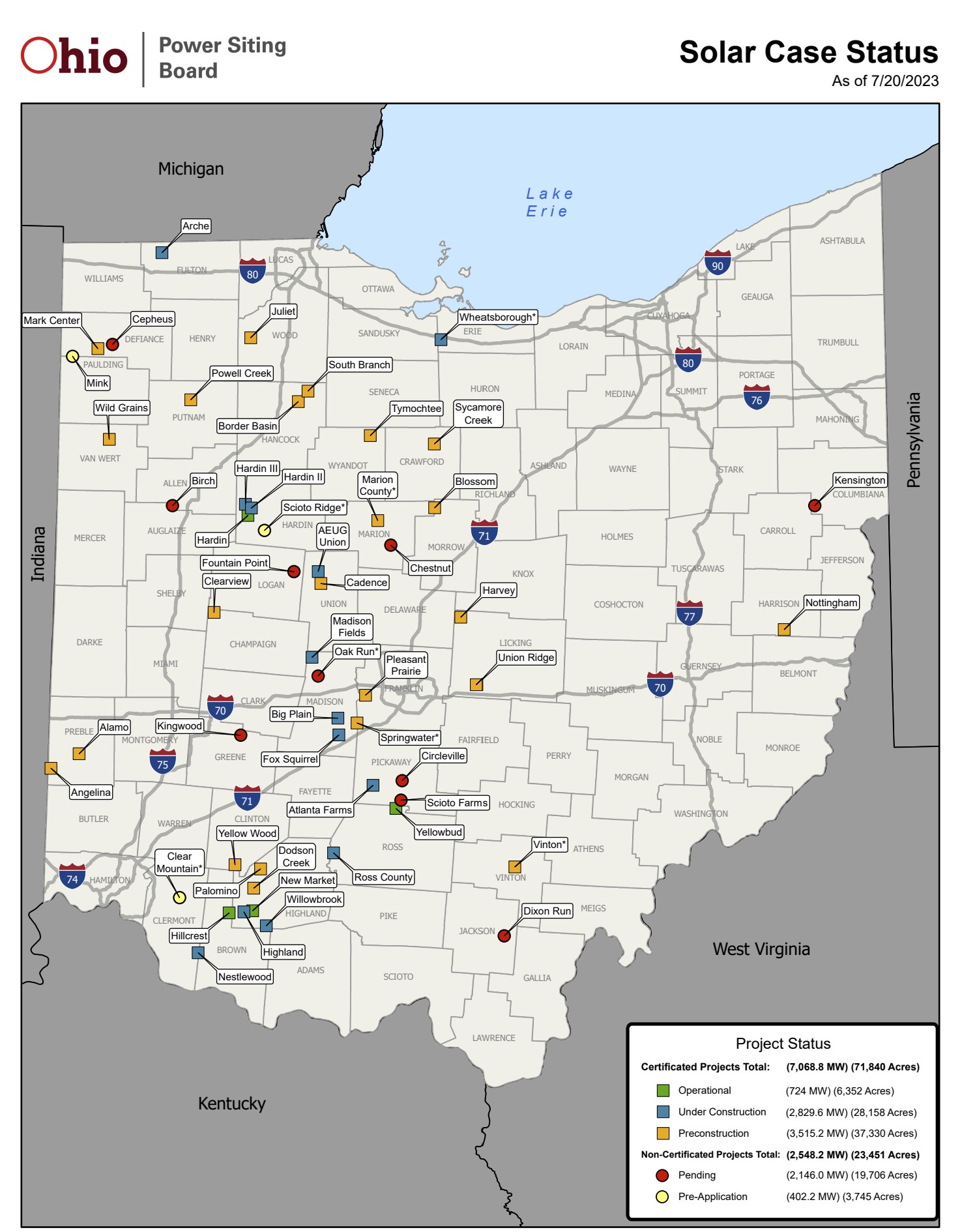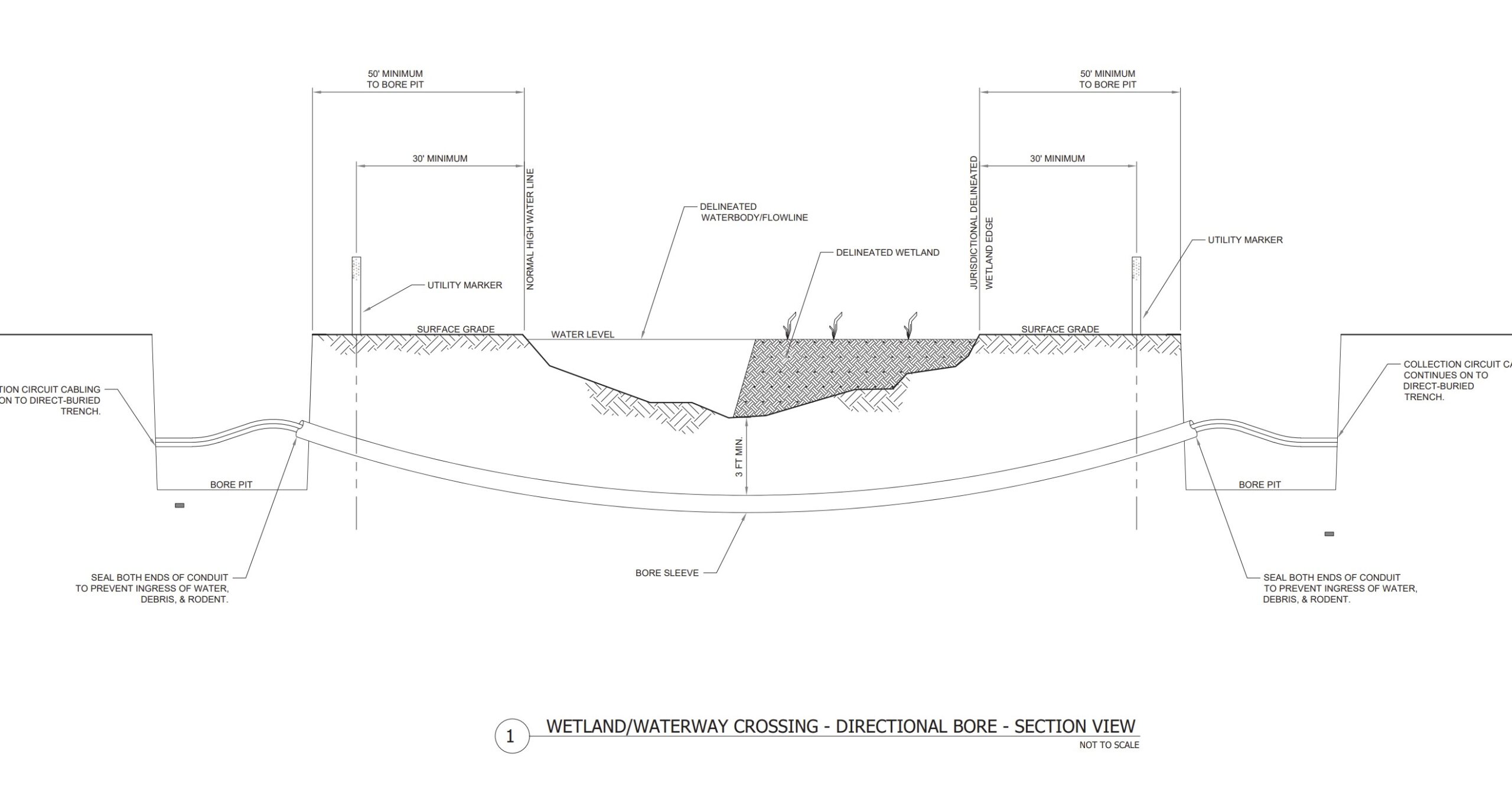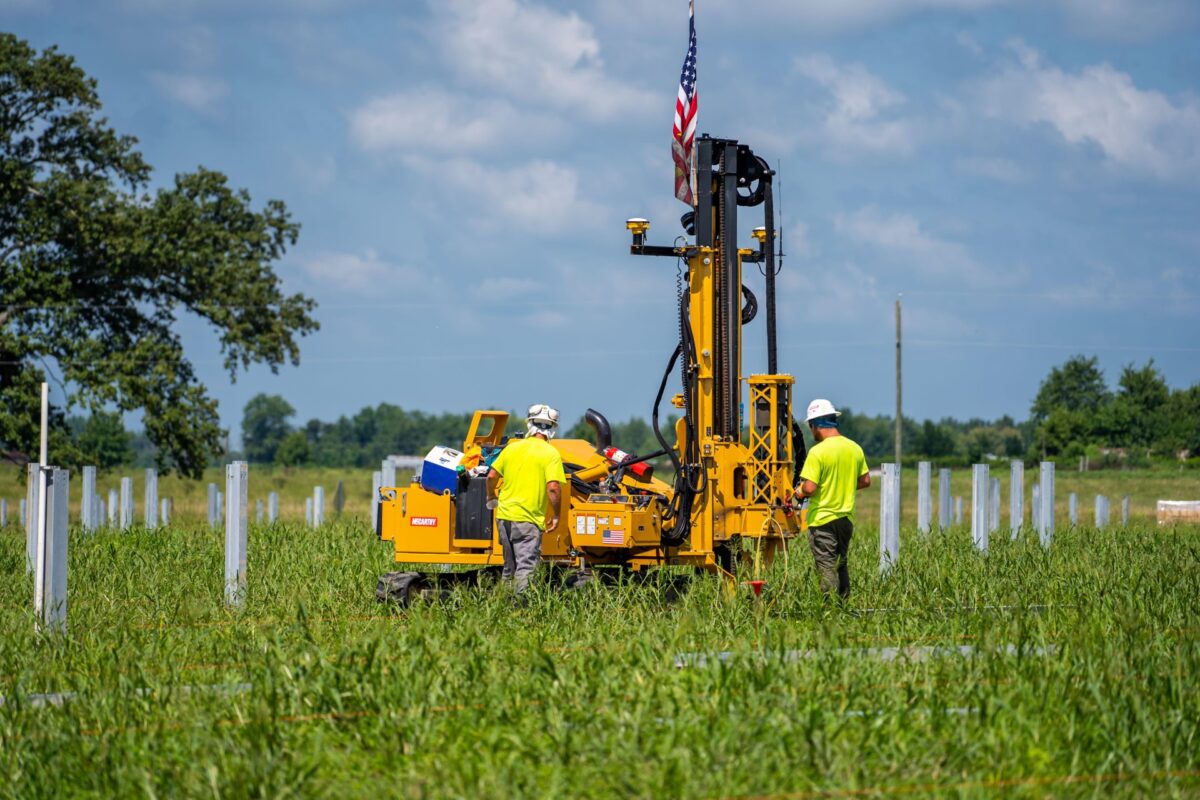The Ohio Power Siting Board (OPSB) revised its guidelines for solar facilities that exceed 50 MWac. These updates include sound regulations that extend to a mile away, modified setbacks – allowing for a 350 foot setback for non-participating neighbors – and a contingency plan in the event of a horizontal directional drilling inadvertent release of drilling fluid.

Updated guidelines now require project developers to conduct two public information sessions prior to submitting their proposal to the OPSB. The second of these meetings must occur a minimum of 90 days before the application is filed to the OPSB. Updated guidelines now require project developers to host two public information sessions before submitting their proposal to the OPSB. The second session must be held at least 90 days prior to the application’s submission. If local authorities modify the solar project’s boundaries, a subsequent public meeting must be convened to discuss the changes, resetting the 90-day window before submission to the OPSB.
Another pivotal change is the introduction of a new noise standard. The OPSB notes that “sensitive receptors” will be positioned within a mile of the project site to ensure noise levels do not surpass the “greater of 40 dBA or the ambient daytime and nighttime average sound level (L50) by more than five dBA.”
Setback adjustments now dictate that solar panels must be a minimum of 50 feet away from non-participating parcel boundaries, at least 300 feet from non-participating homes, and no closer than 150 feet from the edge of pavement of any road inside or adjacent to the project area.
Furthermore, all solar facilities must now submit a “horizontal directional drilling inadvertent release of drilling fluid contingency plan” alongside other mandatory paperwork. This plan is designed to prepare for potential water contamination from the construction process used during boring.

Horizontal Drilling Inadvertent Return Control Plan
This boring technique is typically used to insert conduit and wiring deeper underground to prevent any adverse impact on sensitive areas such as streams and wetlands.
Interestingly, the board opted not to amend a particular rule, despite numerous public requests. The OPSB chose not to clarify the phrase “public interest, convenience, and necessity” within its rule-making terminology, a clause that has been described by the public as contentious.
This matters because the board recently rejected its third solar power project due to “general opposition by local citizens and governmental bodies.” In addition to the board’s decision, various counties in the state have taken steps to prohibit wind and solar projects outright. To date, ten counties have implemented solar bans. Just last month, Clermont County Commissioners unanimously barred large solar and wind projects in seven townships.
Ohio has a complex relationship with energy. While it is home to First Solar, a leading solar power company, the state is currently embroiled in a significant bribery scandal. Allegedly, over $60 million has been funneled to various political groups to endorse H.B. 6. This legislation provided over $1 billion in bailouts to coal and nuclear facilities owned by FirstEnergy.
This content is protected by copyright and may not be reused. If you want to cooperate with us and would like to reuse some of our content, please contact: editors@pv-magazine.com.








By submitting this form you agree to pv magazine using your data for the purposes of publishing your comment.
Your personal data will only be disclosed or otherwise transmitted to third parties for the purposes of spam filtering or if this is necessary for technical maintenance of the website. Any other transfer to third parties will not take place unless this is justified on the basis of applicable data protection regulations or if pv magazine is legally obliged to do so.
You may revoke this consent at any time with effect for the future, in which case your personal data will be deleted immediately. Otherwise, your data will be deleted if pv magazine has processed your request or the purpose of data storage is fulfilled.
Further information on data privacy can be found in our Data Protection Policy.